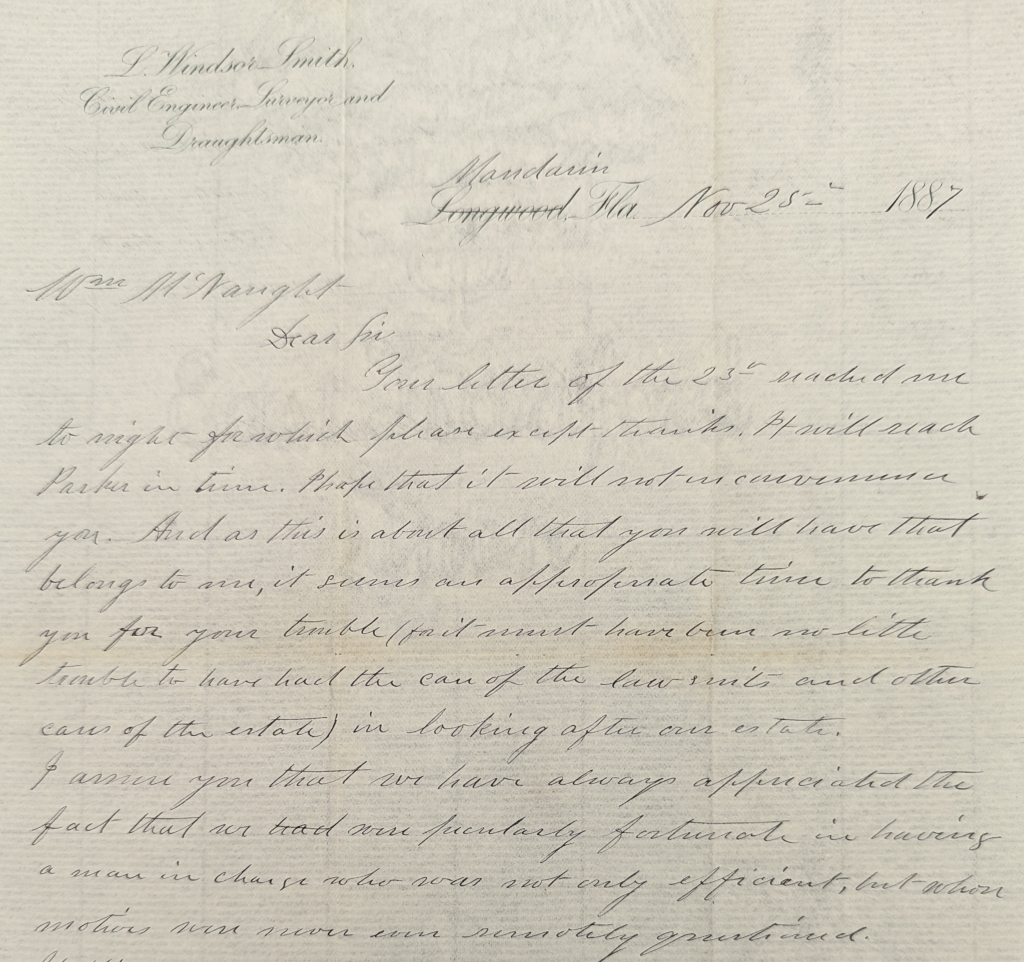Significant events 1888-1890
Part of the ‘Smith family history’ series
At the conclusion of the previous post I referred to a series of events leading up to Robert Windsor Smith’s move to the village of Kirkwood. In forthcoming posts I will provide a little background history on Kirkwood, but first will now discuss the significant changes in the late 1880’s that preceded their move.
First, Robert and Mary’s eldest son Eugene married Mary Tennessee Mitchell (aka “Tennie”) sometime in 1888. I was unable to locate any newspaper announcements regarding their union, but the 1900 Federal census includes a field for “number of years married” and both Eugene and Tennie’s rows specify 12 years, so we can deduce that they were married in 1888. Their first child Evelyn Maude Smith (later Wilson after marriage) was born 11/8/1889. The young family was listed in the 1889 and 1890 Atlanta City directory as living with Robert and Mary at 339 Whitehall.
This would put the count of residents in the Smith household in late 1889 at 8 or 9, plus they may have had an in-house domestic servant as well. While we don’t know the size of the 339 Whitehall house, one can imagine it was quite a bustling, and potentially crowded, place.
The uncertainty about the actual number of Smith family members in late 1889 is due to the unfortunate demise of Rosa Clare Smith. Robert and Mary’s daughter Rosa was born in 1879, but sadly passed away at an unknown date in 1889 at the age of 9 or 10. Her cause of death is also unknown, but this must have been a terrible tragedy for the family. Mary had given birth to nine children, and now only four were still living: Eugene, Evie, Spencer, and Earnest.

Another death in the family was Mary’s mother, Jane Alexander Wright, who I believe passed away sometime in early August of 1889 at the approximate age of 79. Jane had been living at 66 East Peters Street in downtown Atlanta since ~1876 or 1877. The 1880 census listed her, son Lucian, and daughter Rosa (Lucia Rosalie Wright) living with her at the time. I found an 1877 for rent advertisement listed by Mary for the 66 E. Peters house, the following image shows it overlaid with the location of the property from an 1878 map.

The block where the Wright property sat is now the location of Atlanta City Hall. The lot on the map above labelled as “City Hall & Court House” is now the location of the current Georgia state capital building. I believe that Peters Street was renamed to Trinity Avenue near the same time as the 1892 citywide renumbering. Following Jane Wright’s passing, Mary’s younger sister Rosa lived at the residence there, and the 1890 and 1891 city directories list her at 66 E. Peters, but following years list her at 106 Trinity Avenue. Rosa was named executrix of the estate following their mother’s death.

Another interesting trivia tidbit about the block shown on the map above is with regard to the lot labeled as “High School.” That property was the “Neal-Lyon-Neal” house, originally built by John Neal prior to the Civil War. When the arrival of Union forces was imminent Neal and his family left, and during the occupation Sherman used the house as his headquarters and it was one of the few structures spared the torch.
About the time the Atlanta Campaign began, Mr. Neal decided to return to Zebulon with his family and sold his new Atlanta home to Judge Richard F. Lyon, of Albany, an associate of the Georgia Supreme Court.
Franklin M. Garrett, Atlanta and Environs Vol. I, Page 639
…
Prior to leaving Atlanta Neal asked his old friend Professor J. R. Mayson, principal of the Female College at Ellis and Collins (Courtland) streets, to move his school into the house on the theory that it was more likely to be spared if used for educational purposes. This, Mayson agreed to do, and the Neal furniture was stored in the parlor. Upon the Federal occupation of the city the school was disbanded and Professor Mayson moved out, making way for the most unwelcome guest in the city’s history. To General Sherman’s credit however, it must be said that he left the house in excellent condition, and the Neal furniture, stored in the parlor, was disturbed but little.

Judge Lyon must have been speculating that Atlanta would not be destroyed and was presumably purchasing various real estate parcels, including acquiring property from Robert Windsor Smith as well which I referenced in an earlier post. After the war Neal repurchased the property at auction but never lived in it again.
From 1870-1872 the house was used by the briefly reformed Oglethorpe College (coincidentally my alma mater) which was originally located in the state capital of Milledgeville. The post-war incarnation of Oglethorpe College failed and the school was effectively mothballed until 1913 when Thornwell Jacobs reorganized it at the present location in Brookhaven.
In 1873 the Atlanta Girls’ High School moved into the building (hence the “High School” label on the 1878 map above), and remained there for approximately 50 years. The building was demolished in 1928 to make way for the current Atlanta City Hall building which completed construction in 1930. Additional information and photos here:
https://atlantablockparty.blogspot.com/2014/07/
In October of 1890 Robert’s uncle William McNaught discharged his duties as administrator of the L. Windsor Smith estate. McNaught had served in this capacity for nearly 30 years following the death of Robert’s father in 1861.

Contained within the McNaught papers at the Atlanta History Center, there is a touching letter written by Robert’s younger brother Windsor to his uncle McNaught in 1887.
Dear Sir,
Your letter of the 23rd reached me tonight for which please accept thanks. It will reach Parker in time. I hope that it will not inconvenience you. And as this is about all that you will have that belongs to me, it seems an appropriate time to thank you for your trouble (for it must have been no little trouble to have had the care of the lawsuits and the care of the estate) in looking after our estate.
I assure you that we have always appreciated the fact that we were particularly fortunate in having a man in charge who was not only efficient, but whose motives were never even remotely questioned.
If this seems effusive pray excuse me, I probably could not speak it, but may perhaps write it.
Windsor Smith to William McNaught, 11/25/1887, Courtesy Kenan Research Center at the Atlanta History Center
My assumption is that the remaining assets of the estate, including the 54-56 Whitehall storefront under lease to M. Rich & Bros. was under Robert Windsor Smith’s control at this point. The 1890 Fulton County tax digest lists Robert’s real estate holdings as valued at $48,000 which was quite a substantial amount of money at the time.

Given what must have been a degree of financial security, the fact that Robert had turned 49 years old (exceeding life expectancy for the time), and that he had worked as an express messenger for nearly 24 years leads me to conclude that Robert effectively retired around the time the family moved to Kirkwood in 1890.
Up next I’ll share some facts about later residents of the Smith family house at 339 Whitehall and the fate of the 54-56 Whitehall storefronts. After that we will jump straight into background on Kirkwood.

